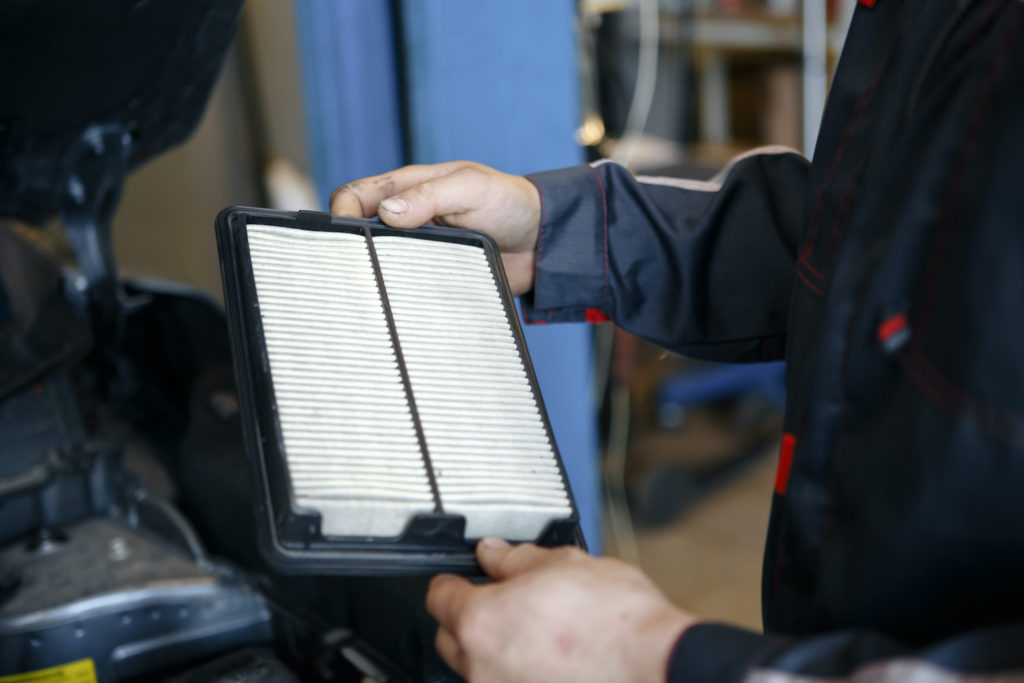Vintage cars have a bunch of mechanical parts, such as ignition points and carburetors, that have to be constantly “tuned up.” But on modern vehicles, nearly all such components have been superseded by electronic controls.
As a result, conventional tune-ups are a thing of the past.
What Does a Tune-Up Consist of on a Modern Car?
These days, spark plugs and air filters are the only remnants of a traditional tune-up. Most vehicles no longer have a cap or rotor (or even spark plug wires) to replace.
That doesn’t mean your car is maintenance-free, though. To keep your vehicle running right, you must follow the service schedule outlined in the owner’s manual.

Car Tune-Up Checklists: You Don’t Need Them—Just Follow Your Regular Maintenance Schedule!
Even though traditional tune-ups are a thing of the past, cars still require routine upkeep. Following the manufacturer’s maintenance schedule will help you keep your vehicle in good working condition.

What a Typical Maintenance Schedule Might Include
Exactly what a maintenance schedule includes will depend on the year, make, and model of the vehicle. The majority of cars, however, will require most (or all) of the services listed below.
Fluid Exchanges
Engine oil isn’t the only fluid that needs to be changed on a regular basis. On nearly all vehicles, the engine coolant and transmission fluid must also receive routine service.
Some automakers also recommend changing the brake fluid and the power steering fluid (if equipped). Plus, on vehicles that are not front-wheel drive, you often have additional fluids (i.e., differential and transfer case fluids) to replace.
Over time, automotive fluids break down and can no longer protect vital parts of the vehicle. That’s why it’s so important to change your car’s fluids regularly.
Doing so is cheap insurance against major repairs.
Replacement of Various Filters
All modern cars have a cabin filter and an air filter that require routine replacement. The cabin filter keeps contaminants out of the interior, so you can breathe easily. Meanwhile, the air filter prevents dirt and debris from entering the engine.
Some cars also have a serviceable, external fuel filter. On others, the fuel filter is a non-serviceable component located in the gas tank.

Replacement of the Spark Plugs (and Possibly Other Ignition Components)
As was mentioned, all late-model, gas-powered cars still have spark plugs that require routine replacement. Some vehicles may also have spark plug wires to service, and certain older applications have a distributor cap and rotor that need maintenance.
Tire Rotation and Tire Inflation Adjustment
Most automakers recommend checking the tire pressure with each oil change and rotating the tires with every other oil change. Maintenance such as this helps your tires last longer—and tires that are in good condition make your car safer to drive.
Routine Visual Inspection
Automakers also recommend checking select parts of the vehicle at certain intervals. For example, a manufacturer might suggest performing a visual inspection of the drive belt every 100,000 miles or the exhaust system every 3,000 miles.
Additional Services
Some vehicles have additional services you need to be aware of. For this reason, you should always check your owner’s manual to find out exactly what components need routine upkeep.
For example, although most modern engines now have a timing chain, some cars still have a timing belt that requires service. Since the rubber belt is exposed to a lot of heat and stress, it can degrade over time.
It’s important to replace your car’s timing belt (if it has one) at the interval recommended by the vehicle manufacturer. If the belt gets worn to the point that it breaks, severe engine damage will likely result.

Car Care is Still as Important as Ever
Despite the traditional tune-up being a thing of the past, car care is just as important as ever. Modern cars still have fluids, filters, and a bunch of other stuff that requires maintenance.
But you don’t need to bother to ask your mechanic for a tune-up anymore—just follow the service schedule listed in your owner’s manual. That’s the first step towards keeping your car running right for many years to come.
Any information provided on this Website is for informational purposes only and is not intended to replace consultation with a professional mechanic. The accuracy and timeliness of the information may change from the time of publication.






























Yes I would like to know the difference in the two different lock gas caps by stant for my 1997 Buick Park Avenue Ultra…?
Thomas Dill
The dimensions are a bit different in the actual part itself and if you want the locking gas cap all you have to do is look up the part specifically made for your car and depending on who carries this part trust your instincts and look it up from your local auto parts stores in your area and that is that for now.